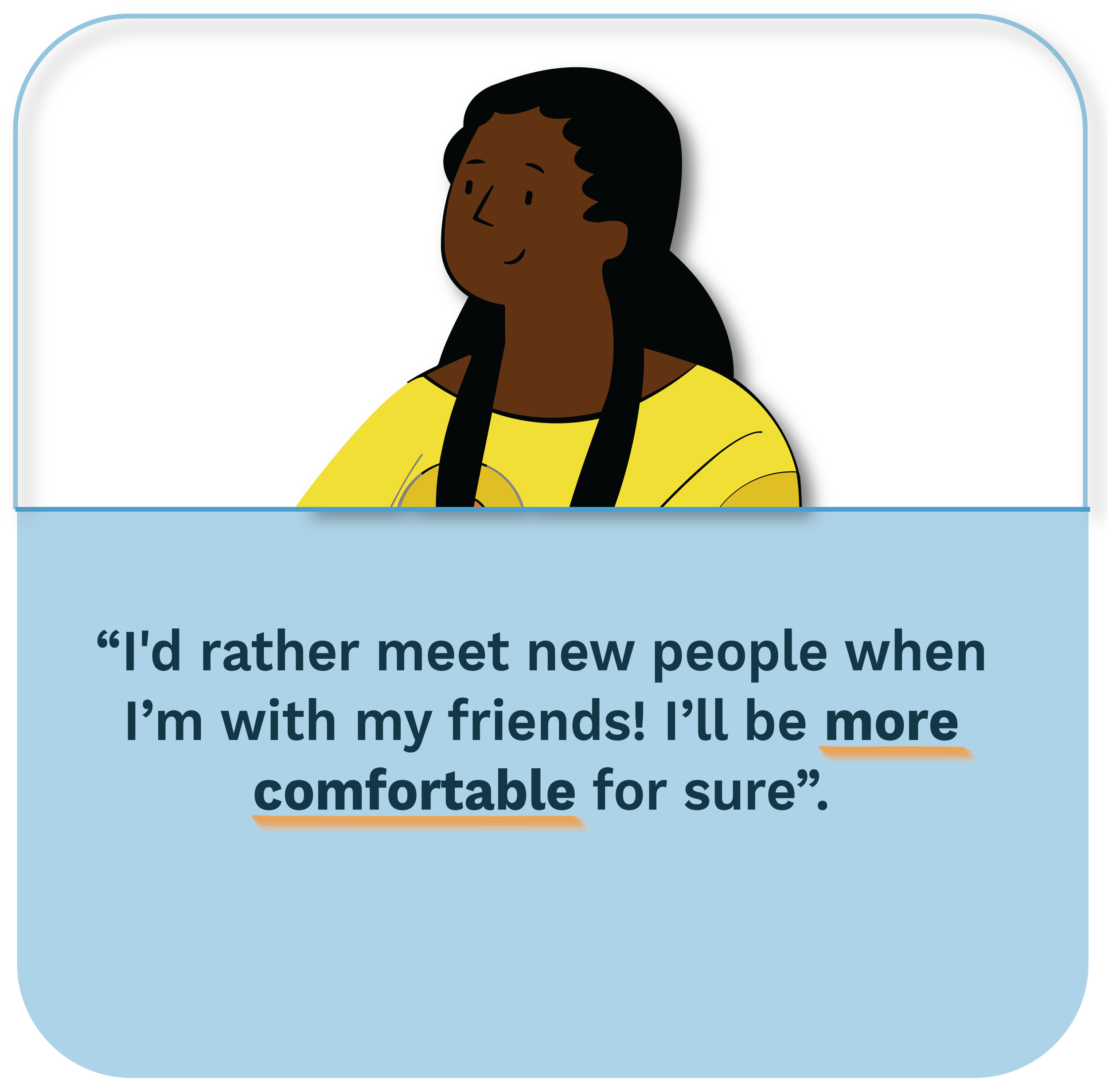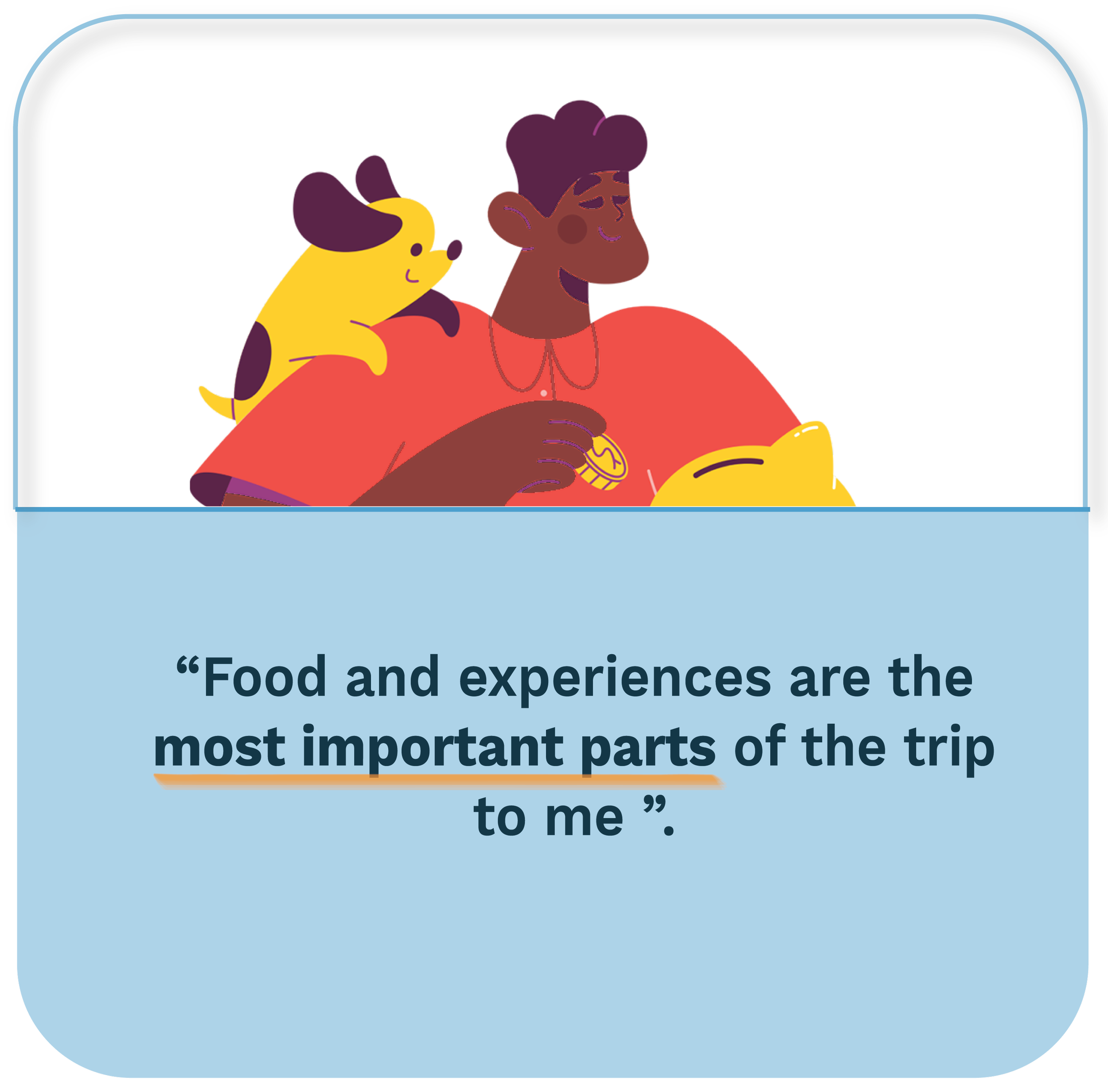Affordable travel planning with friends, made easy.
Problem
After performing preliminary research as well as contextual inquiry, we realized many young people had a hard time planning trips and finding cheap deals to save money, especially students.
Major pain points included finding and booking experiences, finding people to go with as well as organizing the itinerary. Furthermore, we found that many people struggled to find legitimate coupons and relied heavily on word of mouth from peers.
Solution
We further analyzed our insights using Empathy Maps and Affinity Clustering. After performing Think Alouds and Parallel prototyping, we synthesized our final ideas into one. We aimed to prototype a platform which allows friends to connect with other travel groups and book experiences together, in order to save money on trip expenses. The app allows users to purchase tickets and plan itineraries as a group too. All users of the platform will be verified via passport documents to ensure the safety of all participants.
Insights
Through pilot interviews and surveys, we learnt a lot about people’s travel experiences and their choices when it came to planning. A helpful insight was that people prioritized food, experiences and accommodation when travel planning. People also liked the idea of meeting new people during experiences. Nevertheless, safety was a concern. This helped us understand what to prioritize when designing our platform.
We were also able to understand the primary methods our target audience used to save money: Discount codes, Promos, Hostels and Groupons. In conclusion, being able to plan and access fun, safe and cheap experiences with friends was very important to our users.
Our evidence lies in the discussions and learnings we gathered from low-budget travelers, who voiced needs like:
“Traveling in groups makes the language barrier easier to deal with”
“Couldn’t find a lot of coupons online; I’ve had to ask my schoolmates for help.”
This indicates that group travel can be beneficial and there is a market for group discount discovery.
Key Takeaways
Found Hypothesis
There wasn’t as much concern about safety as we anticipated, opening up more possibilities for meeting new people on trips.
In our pre-interview survey, we asked participants to rank their safety concerns in order from greatest to least important. Things like speaking the local language and location of accommodation were featured on the list. As a follow-up, we asked the interview participants to elaborate on their safety concerns. Surprisingly, we found that safety isn’t a big consideration. A few participants mentioned preparing for the trip helps them feel safer, but overall the participants were mostly nonchalant about the topic. One female participant said the destinations she visits aren’t any more dangerous than her home city. (EK-4) We had anticipated safety being a major obstacle in our project goal of facilitating group travel and meetups with strangers. This insight gives us the opportunity to explore options which we had previously thought unlikely to be successful due to anticipated safety concerns.
People look for discounts through student deals and seasonal deals in tickets to reduce cost of travel.
We asked participants on ways they reduced their cost of travel. We got answers ranging from saving up money, eating out less, taking the public transportation and looking for deals through discounts, groupons and trends in ticket fares. One participant even researched on museums that they were interested in visiting to see if it had specific days with discounted entry fees. Another looked online for coupons and relied on word of mouth from other students to find out about student discounts. In order to spend less while getting the best experience possible, not only do people end up doing a lot of research on their part for accommodation, transportation, and food, they also look for niche ways to reduce travel costs. Providing a collection of resources for these niche ways would help point travelers in the right direction early on in their planning process and save time.
People would be interested in a platform that shows a variety of travel coupons and discounts ready for purchase in-app. Consolidating the research for people in one place is a way to smoothen the trip planning process.
Trip planning could be made more fun and social while encouraging people to save on group activities with friends and/or making new friends.
Design
Walking the Wall
Based on past research, our affinity diagram and the models we created using insights from them, we broke down the needs and questions while highlighting the insights and further analyzing them in conversation.
Crazy 8’s
We used this method for rapid prototyping. With the prompt being what came to mind when thinking of trip planning, we brainstormed ideas that would meet user needs based on our analysis and reflection.
Speed Dating
As a group, we generated several quick storyboards, aiming to illustrate several solutions with varying degrees of risk, in order to assess user needs in the problem space. The speed dating helped bring out common misunderstandings between us and the user, through the proposed solutions and their feedback. In the speed dating session, people were able to talk more freely about what will not work as they understood the storyboards were rapidly made just for testing the concept.
Need: Secure measures that ensure maximum safety.
Risk Level 1
Risk Level 2
Risk Level 3
Speed Dating: Feedback Summary
Generally, our participants were open to meeting strangers while already on their trip, but felt more comfortable traveling with people they know. They would prefer meeting new people with someone they already know. 5.
If they did meet new people on their trips, our participants expressed high interest in being able to Facetime them ahead of time.
They also appreciated the inclusion of background checks on any meetup-based program. There was some difficulty with separating meetup apps from dating apps and the problems that come with them.
Solution
A platform allowing friends to connect with other travel groups and book discounted experiences together, ensuring users reduce travel expenses. The app allows users to purchase tickets and plan itineraries as a group too. All users of the platform will be verified via passport documents to ensure the safety of all participants.
Low-Fidelity Prototype
For our first prototype iteration, we tested whether the location view versus experience view was feasible to users. We also configured the experience view page so people can swipe on experiences to add them to their favorites.
User feed back and Reiteration
Upon having our users test the prototypes, we got suggestions about the interface and functions. One if the feedback we got was that it would be confusing when swiping as the level of commitment is not known. Therefore, we added an overlay once the experience tab is switched on, communicating that once they swipe right the experience is only added to their favorites. We also performed Think Alouds and continued working on the design as a hi-fi prototype.
The Pitch
Reflection
● After running a set of user tests with out re-iterated Mid-fi prototype, we found that 5 out of 6 participants clicked on the Sign up button, which was our honest signal. This indicates that users may be receptive to the idea of connecting with strangers for cost effective travel planning.
● Making travel planning more social needs to be carefully thought tout, so as not to overwhelm the user.
● We allowed our participants to be in their natural environment when testing the prototype. without us observing them so they would not be influenced by social desirability factors.
● An improvement to the prototype could be to reduce the amount of information shown at once, so as to make it easier for the user to navigate and the platform and comprehend all the information needed.
● Making all our functionalities available, as a bulk of the testing became participants clicking around on buttons that led nowhere yet.
● We could also place more emphasis on onboarding how to do a Think Aloud, as we heavily relied on what the user said since we were not physically present.






























